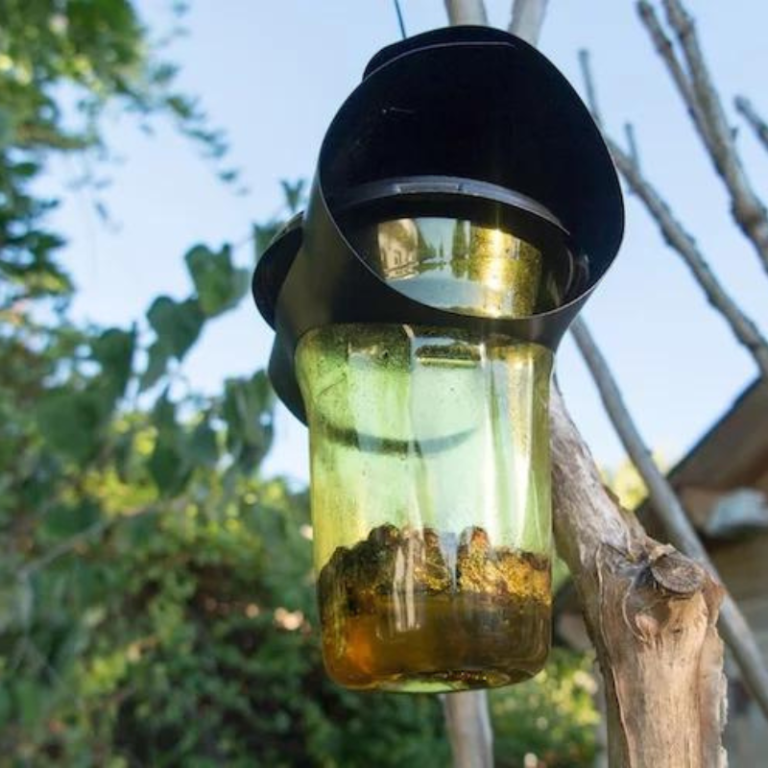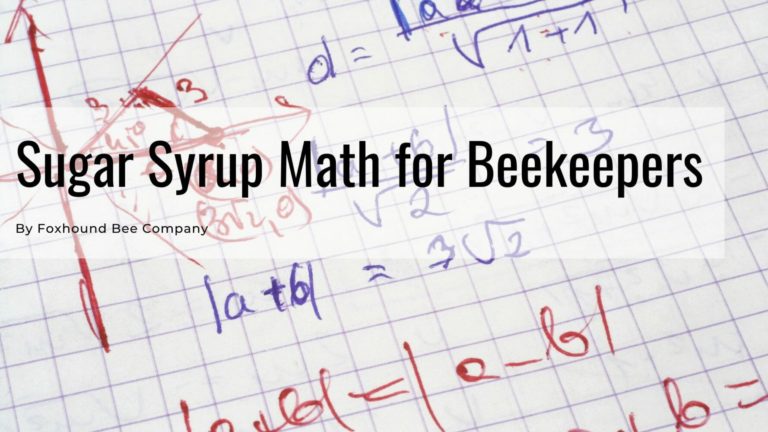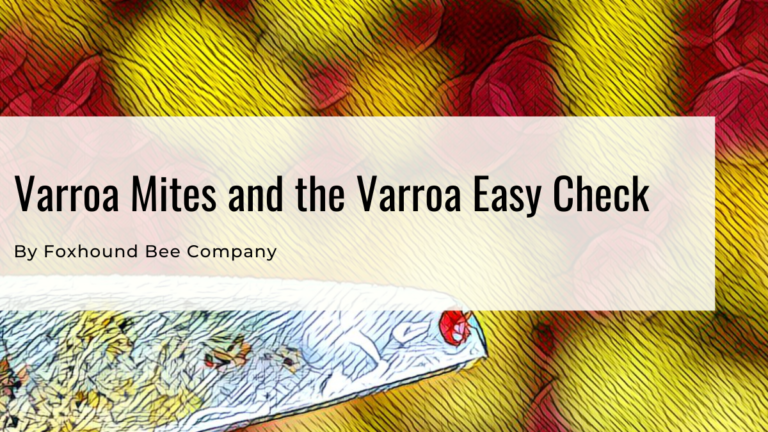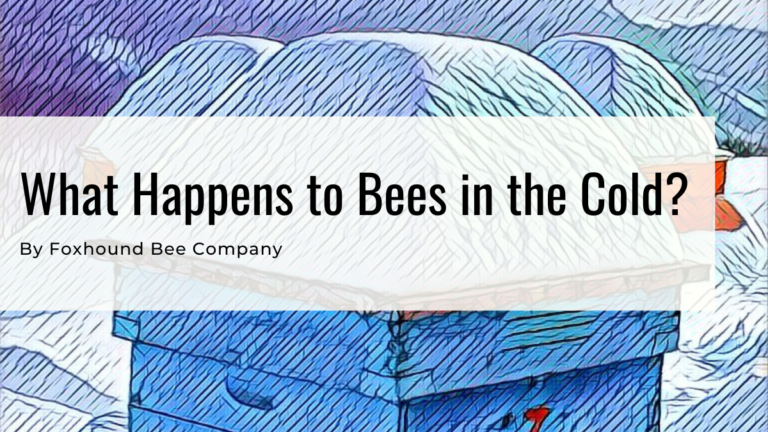Table of Contents
Beekeepers and honey enthusiasts, it’s time to face a new challenge that threatens our beloved honeybees and the pollination industry – the Asian hornet.
You’ll also hear it called the Yellow Legged Hornet or the European Hornet. I personally like the yellow-legged name, as that is the easiest way to identify it.
This invasive predator has made its way into the United States, and it’s vital to understand its characteristics and behaviors and how to control its impact on our precious bees and honey production.
As if we needed another pest, right? This is a new pest; not much is known about it for US beekeepers. But it has been a major pest in Europe for a while, and I’ve reached out to my European counterparts for details on the hornet vespa. They simply just call them European hornets.
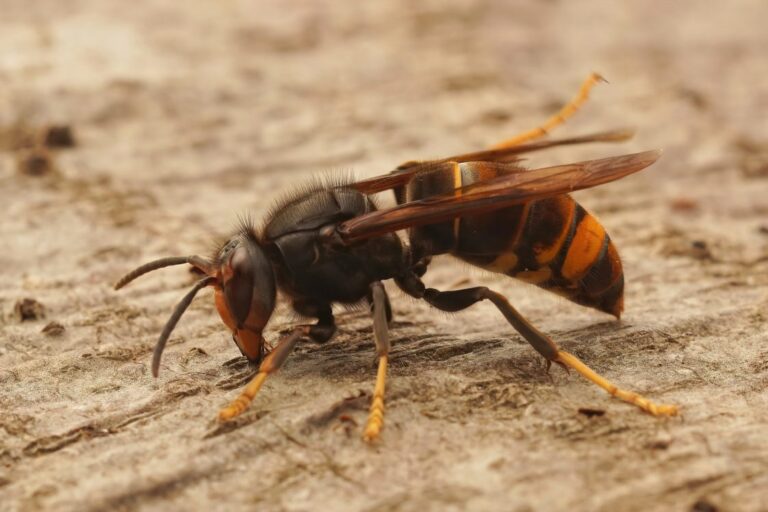
The Basics of the Yellow Legged Hornet
Understanding the Asian hornet threat is essential for beekeepers because it isn’t going away.
Commercially available traps and DIY control options are effective in controlling Asian hornets.
Safety measures should be taken when dealing with Asian hornets to reduce risk of stings and life threatening effects.
There are smart ways to control these pests and ineffective ways.
Understanding the Asian Hornet Threat
The Asian hornet, a major predator of honey bees in Western Europe, poses a significant threat to honey production and also to our native pollinators. Understanding the potential impact of this new pest is important for beekeepers and their bees. including The information here is also similar to the associated risks from other hornet or wasp species, but this particular hornet is pretty awful for bees.
These hornets construct paper nests, often in hollow trees. Finding an unprotected nest is uncommon as they typically build in a covered or protected space. European hornets also have an appetite for honeybees, which is why I’m writing this. European hornet nests can be particularly concerning for beekeepers, as they can cause stress and starvation in bee colonies, eventually leading to the death of the bees.
In the United States, the yellow-legged hornet feeds on stinging insects and has been spotted in Georgia, posing a risk to honey production and native pollinators in the state. Georgia is actually a major producer of bees in the US, and having this type of pest causing damage in Georgia and other southern states will cause issues in the rest of the US.
Georgia and other southern states are working extremely hard to eliminate this threat to beekeepers and taking it very seriously. But we can’t be completely hands-off on it.
Identifying the Asian Hornet
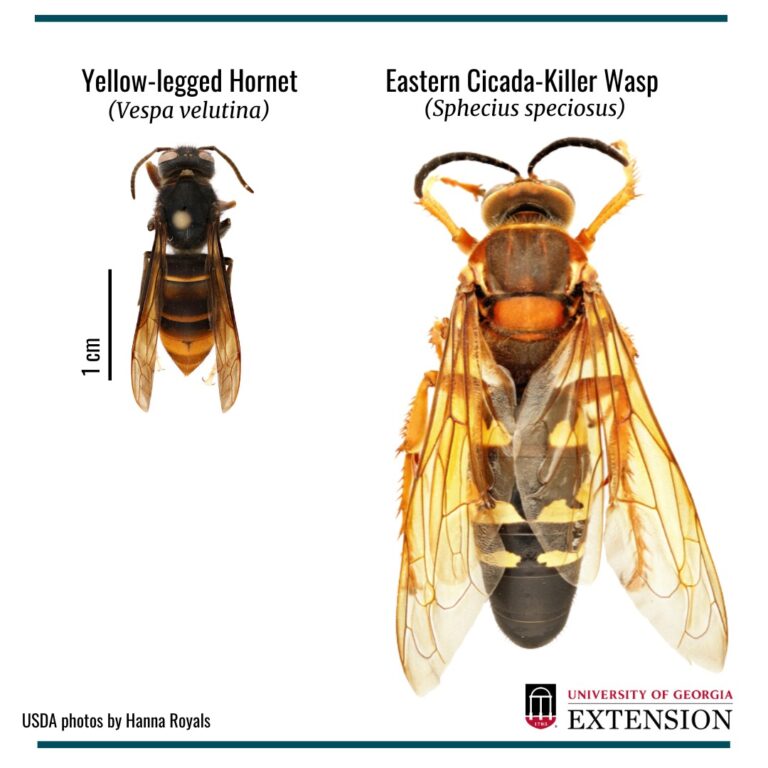
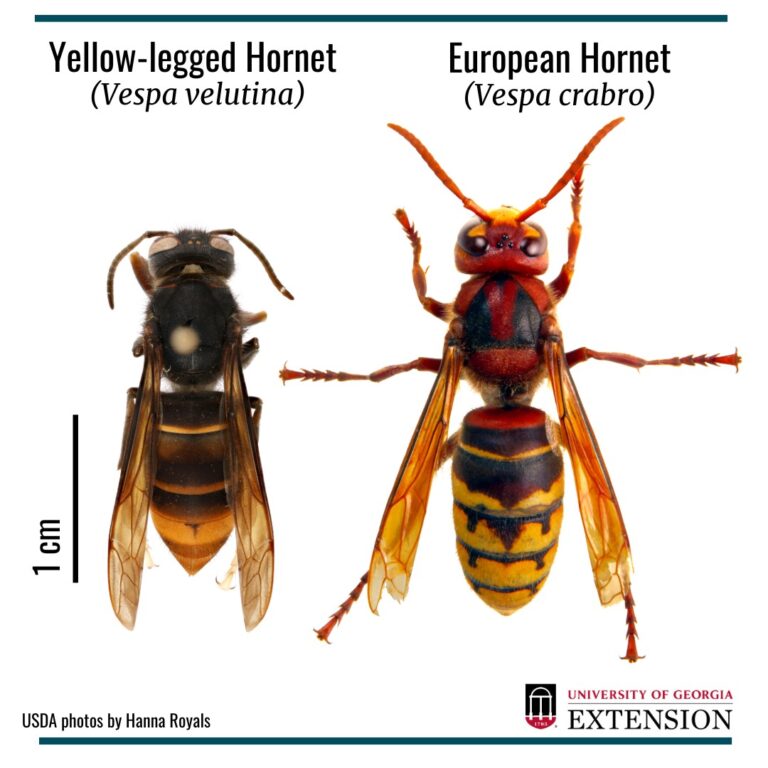
Identifying the Asian hornet involves recognizing its distinctive characteristics:
Distinctive coloration: The European hornet worker has a red and yellow head, a red and brown thorax, and a brown abdomen with yellow stripes.
“Wasp waist”: The Asian hornet has a narrow waist between its thorax and abdomen, giving it a distinct hourglass shape.
Size: Asian hornet workers can reach up to an inch in length.
Physical features: They have two pairs of wings, six legs, long bodies, and antennae.
The Asian giant hornet can be distinguished from the European hornet by its distinct eye color and positioning. European hornets are native to Europe and Asia, and their european hornet nest typically contains 1,500-3,000 cells, peaking in mid-September with 200-400 workers.
These nests are often found in hollow walls of trees, barns, sheds, attics, and wall voids of houses. European hornet stings can be a concern for those living in close proximity to these nests.
See the Yellow-Legged Asian Hornet article by University of Georgia.
Photos by University of Georgia
Seasonal Activity of the Asian Hornet
Asian hornets are most active during warmer months when temperatures exceed 59°F (15°C ). Like the bald-faced hornet, they thrive in late summer and early fall, and their activity is influenced by weather and temperature. Some key points about Asian hornets are:
They are most active during warmer months
Their activity is influenced by weather and temperature
They collect their protein from eating other insects instead from pollen
Queens will overwinter by themselves, unlike honey bees.
Overwintering
The overwintering behavior of the queen Yellow Legged Hornet (Vespa velutina) is quite intriguing and is key to the survival of the species. It’s much different than how bees overwinter and is part of why it is hard to control their expansion. Here’s how the process typically works:
Late Summer and Autumn Activities:
Towards the end of summer and into autumn, new queens are produced in the nest along with male hornets. These new queens mate with the males, which a male can mate multiple times.
Entering a State of Diapause or Hibernation:
Diapause is a state of suspended development and reduced metabolic activity. The mated queens enter this state as a way to survive the winter. during diapause, the queen’s physiological processes slow down significantly, conserving energy for survival through the cold months. Whereas a queen bee has to stay warm and still functions, wasps and hornets don’t do this in cold climates.
Finding a Suitable Overwintering Site:
The mated queens seek out protected locations to spend the winter. These sites are typically secluded and insulated, like under tree bark, in soil, in rotting wood, or even within human structures. The chosen site needs to provide protection from the elements and predators while maintaining a stable environment that isn’t too cold or too damp.
Overwintering Period:
Throughout the winter, the queen remains largely inactive in her chosen hiding spot. She relies on the fat reserves built up during her active months to survive. The queen does not eat during this period, as her metabolism is greatly reduced.
Emergence in Spring:
As temperatures begin to rise in spring, the queen gradually comes out of diapause. She then starts searching for a suitable location to establish a new nest and then the queen lays eggs, beginning the cycle anew.
Summer Months
During the summer, the behavior of Asian Hornets (Vespa velutina) is primarily focused on colony expansion and food gathering. These hornets are active and can pose a significant threat to your apiary in the summer.
Colony Expansion:
In early summer, the queen, who has survived the winter, starts a new nest and lays eggs. These eggs hatch into worker hornets, which then take over the duties of expanding the nest and foraging. The nest grows throughout the summer, often becoming quite large by the end of the season. The structure of these nests can vary, but they are typically found in high places like tree canopies, under eaves, or in other sheltered areas.
Foraging and Feeding:
Yellow Legged Hornets are predators and scavengers. They forage for a variety of foods, including insects, caterpillars, spiders, and sometimes even fallen fruit. A significant part of their diet involves hunting other insects, and unfortunately, this includes honey bees. They are known to attack bees both in flight and at the entrances to beehives, making them a particular concern for beekeepers.
Predatory Behavior:
These hornets often hover in front of beehives, picking off returning forager bees. They can also form hunting parties to launch coordinated attacks on beehives. After capturing a bee, the hornet will usually decapitate it and take the thorax (which contains the flight muscles and is rich in protein) back to the nest to feed its larvae. Gross…
Larvae Feeding and Adult Nourishment:
The adult hornets feed chewed-up prey to the larvae. In return, the larvae produce a sweet secretion that the adults consume. This exchange is crucial for the energy needs of the adult hornets, especially since they cannot digest solid protein themselves. I swear, I’m not making this up.
Preparation for Winter:
By late summer, the focus of the colony shifts to producing the next generation of queens and males for mating. These new queens and males leave the nest to mate, after which the queens seek suitable places to overwinter, and the cycle continues.
Comparing Yellow Legged Hornets to Mites and Beetles
The yellow-legged hornet poses a different threat compared to varroa mites and small hive beetles, as it directly preys and can cause significant damage to the adult population of bee colonies.
Meanwhile, varroa mites will damage the brood of the honeybee colony, making the bees weaker when fully grown.
Varroa mites are parasitic mites that can weaken honeybees and spread viruses, while small hive beetles are exotic pests that can negatively impact honeybee colonies by feeding on honey, pollen, and brood, causing fermentation and spoilage. Wasp stings, including those from hornets, can also pose a threat to beekeepers and their colonies.
It’s like the triple whammy of beekeeping pests. There is something affecting every stage of the colony
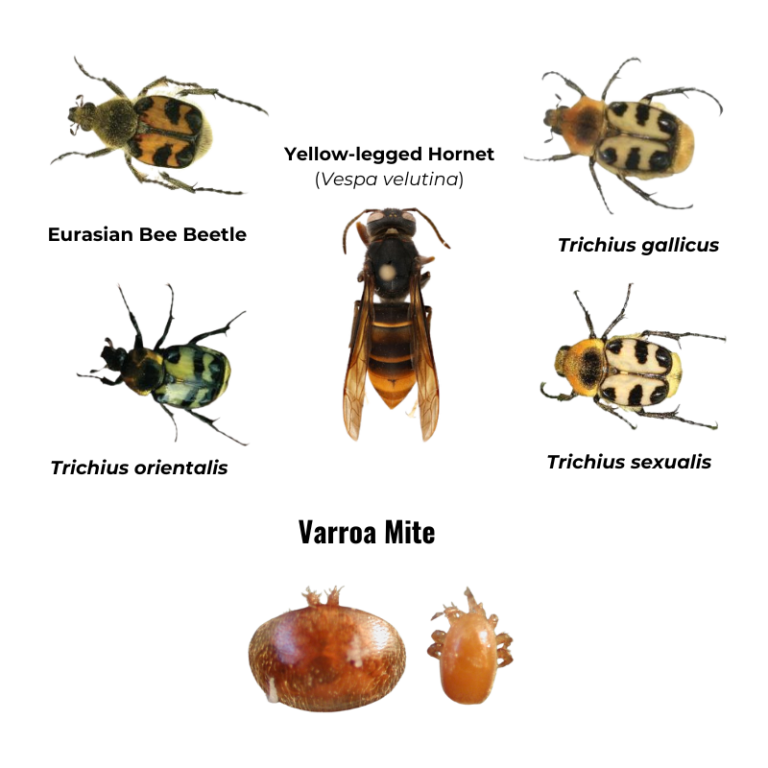
Best Practices for Controlling Asian Hornets
Using the right tools such as commercially available traps, DIY options, and appropriate lures will effectively control Asian hornets. Success hinges on monitoring and maintaining traps, and understanding the hornet’s behavior and nesting habits. It’s better to try and trap queens late in the fall and early in the spring. That makes a bigger difference than catching the workers.
Commercially available traps, such as the VespaCatch, have been proven to be more effective than other traps in capturing Asian hornets.
These traps use a natural attractant based on plant extracts and do not contain pesticides. During a trial conducted in Portugal, the VespaCatch trap caught 2.3 times more Asian hornets than the Tap-trap® product and 5.7 times more Asian hornets than the “DIY trap” (Bottle trap).
The VespaCatch trap, designed to capture vespa velutina, consists of:
A cover pierced with two entrance wells
A lid equipped with a tunnel to concentrate odors and prevent escape
A robust plastic bowl that is weatherproof and can be hung from a tree or hook
DIY Control Options
Beekeepers will naturally DIY a lot of products, but they aren’t always as effective as the commercial available styles. DIY control options may include homemade traps and electric rackets. However, their effectiveness may vary, and they may not be as selective as commercially available traps. To construct a DIY Asian hornet trap, one must procure the following materials:
Plastic Bottle Trap for Asian Hornets
A plastic bottle or container
Wire or sturdy string
Scissors
A sweet liquid (such as honey, orange juice, or rice wine)
Research has indicated that DIY Asian hornet traps are comparable in efficacy to those commercially available. Homemade baits and trap designs can be effective in trapping Asian hornets. However, homemade traps may not be designed to specifically target hornets, and could attract other insects or animals. Furthermore, homemade traps may not be as durable or long-lasting as professionally made traps, and may not have the same level of safety features as commercial traps, potentially posing a risk to children or pets.
Sticky Trap for Asian Hornets
In other parts of the world, they have to deal with other types of carnivorous hornets and wasps. In those places it’s common to find sticky traps, which work in the same way as sticky mouse traps.
The main difference between these traps and the bottle traps is that a hornet that is being threatened will call for help to other hornets. So if a hornet is placed on one of these traps, it will attract other hornets to the glue trap. This type of trap can work for yellow jackets, paper wasps, northern giant hornets, and other types of hornets and wasps. Unfortunately, it will trap and kill anything else that lands on it, including a honey bee.
There is a great Instagram account we follow with lots of details about dealing with these wasps and using glue traps.
See Beekeeper on Awaji Island IG Page.
Lure Selection
Lures should be specifically designed to attract Asian hornets without attracting bees. The VespaCatch attractant, for example, is formulated to target hornets while limiting the impact on biodiversity. The primary components of the VespaCatch attractant are Heptyl Butyrate and 2-Methyl-1-butanol.
Various attractants for Asian hornet traps operate by employing distinct substances or mixtures of substances that are alluring to Asian hornets.
These attractants can incorporate sugary baits, such as orange juice or rice wine, as well as other materials that are known to attract hornets.
The traps are constructed to draw the hornets in with the attractant, and once inside, they are unable to flee. This assists in effectively managing the population of Asian hornets.

DIY Asian Hornet and Wasp Lure
While the commercial products are known to work well, there are DIY options for making your own attractant. The hard part of the DIY option is you want it to lure the wasps and hornets and not the bees. This hornet recipe below is known to work very well.
Stir together equal parts of beer (not the good stuff), white wine, and natural fruit syrup ingredients and pour into Vespa trap, filling it no more than halfway. There are many variations of this, but this is a good solution.
Migration Patterns and Reporting Sightings
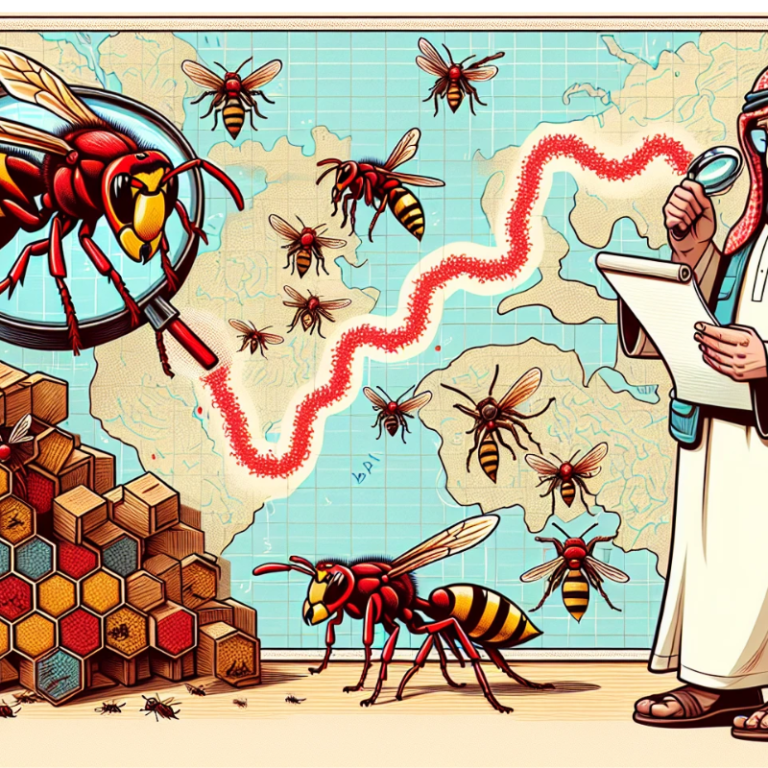
Understanding the migration patterns of the Asian hornet and reporting sightings to the local Department of Agriculture can help slow down its propagation and impact on bee hives.
Unfortunately, the migration patterns of the Asian hornet are not well documented yet as they only entered the Eastern United States in 2023.
It is speculated that they are most prevalent in climates that are mild and rainy, such as in Southeast Asia and certain parts of Europe. There is a concern that they may spread to other areas if not monitored closely.
It is estimated that the Asian hornet population can spread at a rate of approximately 60 miles per year. In Georgia, the Department of Agriculture is collaborating with USDA APHIS lab in Florida and the University of Georgia to ensnare, monitor, and eliminate the yellow-legged hornet.
If you spot a yellow-legged hornet outside of Georgia, report it to the local Georgia Department of Agriculture.
Safety Measures and Emergency Response
Beekeepers should take safety measures when dealing with Asian hornets, such as wearing professional anti-wasp, hornet, and yellow jacket protective apparel, including thick foam suits and Kevlar thread to tie on trackers. Protective clothing is necessary when approaching the nest to reduce the risk of stings. These are typically overkill for beekeeping, but if dealing with a huge wasp nest, it is recomended to take precaution. Hornets and wasps are more aggressive than honeybees.
An Asian hornet sting can cause substantial health effects, including:
Substantial pain and tissue damage
Localized necrosis
Respiratory failure
Kidney failure
Liver damage
The venom of an Asian hornet is both neurotoxic and necrotic, attacking the nervous system and destroying tissue. Multiple stings significantly increase the risk of death, even for those who are not allergic. So don’t take these things lightly.
Frequently Asked Questions
What happens if you get stung by an Asian giant hornet?
Getting stung by an Asian giant hornet could cause a larger venom dose, more tissue damage, and increased pain compared to a regular bee sting. Abdominal pain, a weak pulse, runny nose and sneezing, or swollen tongue or lips are common symptoms. In rare cases, failure of kidneys or multiple organs may occur after a large number of stings.
What to do if you see a giant Asian hornet?
If you see a giant Asian hornet, it is important to notify your state department of agriculture or state apiarist immediately. They are the ones that will need to know about it and will remove it. If you find a dead Asian giant hornet, carefully collect the insect for the authorities. You can identify them because of their half yellow legs.
How venomous are Asian hornets?
Asian hornets have a potent venom that can be dangerous when multiple hornets sting simultaneously, with the potential to even cause death in humans. Justin Schmidt, who has studied the hornets, has noted its toxicity is greater than that of most other stinging insects.
What kills Asian giant hornet?
Removing nests, applying poisons or fire, and trapping and poisoning hornets are the most commonly suggested methods for killing Asian giant hornets.
What to do if you find a yellow-legged hornet?
If you find a yellow-legged hornet, complete the form provided by the GDA, take photos for comparison on the USDA website, and contact your state plant regulatory official. Alternatively, beekeepers can report any sightings to the Savannah detection team. If safe to do so, take a photo or collect a dead specimen to aid in identification.

